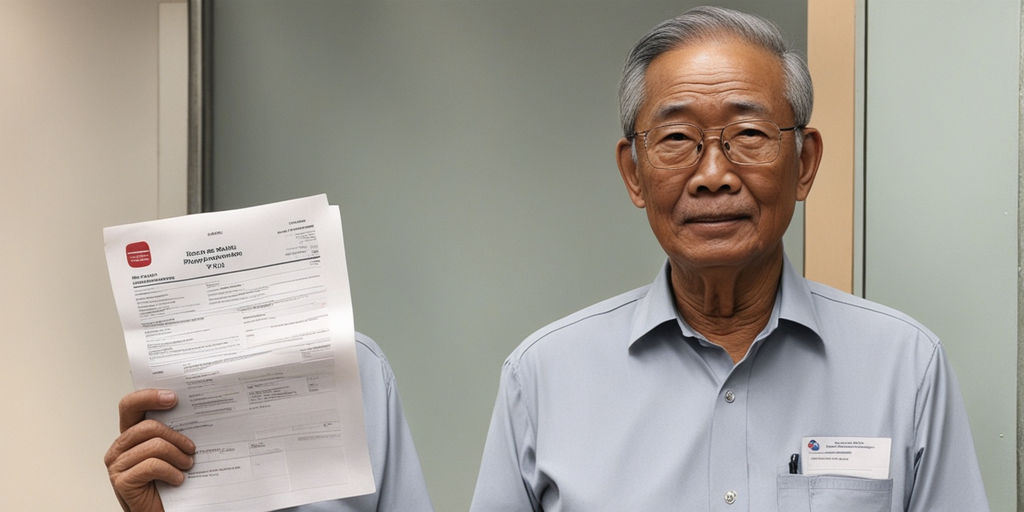
If you’re a working adult in Singapore, you’re probably familiar with the Central Provident Fund (CPF). CPF is a mandatory savings scheme that aims to help Singaporeans save for their retirement, healthcare, and housing needs. One of the key components of CPF is the interest rates that it offers to its members. In this article, we’ll take a closer look at CPF interest rates and what you need to know about them.
Understanding CPF interest rates is crucial because it can impact your retirement savings and financial planning. Currently, CPF offers different interest rates for its various accounts, including the Ordinary Account (OA), Special Account (SA), MediSave Account (MA), and Retirement Account (RA). The base interest rate for the OA is 2.5% per annum, while the SA, MA, and RA offer a higher interest rate of 4% per annum. Additionally, the government pays an extra interest on the first S$60,000 of your combined CPF balances. This extra interest is on top of the base interest rate and can help you grow your savings faster.
If you’re looking to maximize your CPF savings, you need to understand how CPF interest is computed and credited into your accounts. CPF interest is calculated and credited to your accounts annually, based on the daily balance in each account. The interest earned in each account is then combined and credited to your OA account. This process is called interest crediting. By understanding how CPF interest works, you can make informed decisions about how to manage your CPF savings and plan for your retirement.
Key Takeaways
- CPF offers different interest rates for its various accounts, including the Ordinary Account (OA), Special Account (SA), MediSave Account (MA), and Retirement Account (RA).
- The government pays an extra interest on the first S$60,000 of your combined CPF balances, on top of the base interest rate.
- CPF interest is calculated and credited to your accounts annually, based on the daily balance in each account.
Understanding CPF in Singapore

If you’re a Singaporean citizen or permanent resident, you’re likely familiar with the Central Provident Fund (CPF). It’s one of the pillars of Singapore’s social security system and helps you save for your retirement, healthcare, and housing needs. In this section, we’ll cover the basics of CPF and its accounts.
CPF Accounts
CPF has three accounts: the Ordinary Account (OA), the Special Account (SA), and the MediSave Account (MA). The OA is for housing, insurance, and investment purposes, while the SA is for retirement needs. The MA is for medical expenses.
CPF Contributions
As an employee, you and your employer contribute to your CPF account. The contribution rate is based on your age and wage. For example, if you’re below 55 years old, your employer contributes 17% of your monthly wage to your CPF account, while you contribute 20%.
CPF Allocation Rates
Your CPF contributions are allocated to your OA, SA, and MA accounts based on the CPF allocation rates. As of 2024, the allocation rates are 23% for the OA, 6% for the SA, and 8% for the MA.
CPF Wage Ceiling
CPF contributions are capped at a certain amount, known as the CPF wage ceiling. The ordinary wage ceiling is currently set at SGD 6,000 per month, while the additional wage ceiling is set at SGD 2,000 per month.
Social Security
CPF is an important part of Singapore’s social security system. It helps you save for your retirement, healthcare, and housing needs, and ensures that you have a safety net in case of unforeseen circumstances.
Current CPF Interest Rates

If you are a Singaporean citizen or permanent resident, you are required to contribute to your Central Provident Fund (CPF) account. CPF is a social security savings scheme that helps Singaporeans prepare for retirement, healthcare, and home ownership. CPF interest rates are reviewed quarterly and set by the CPF Board. In this section, we will go through the current CPF interest rates for different accounts.
Ordinary Account Rates
Your Ordinary Account (OA) is where your CPF contributions are saved to help you buy a home, pay for your education, and invest. The current floor rate for OA interest is 2.5% per annum. From 1 January 2024 to 31 March 2024, the interest rate for OA is 3.0% per annum. If you have more than S$60,000 in your OA, you will earn an extra interest of 1% per annum on the first S$20,000 of your OA balance. This means that you can earn up to 4% per annum on your OA balance.
Special and Medisave Accounts Rates
Your Special Account (SA) and Medisave Account (MA) are designed to help you save for your retirement and healthcare needs. The current floor rate for SA and MA interest is 4.0% per annum. From 1 January 2024 to 31 March 2024, the interest rate for SA and MA is 4.5% per annum. If you are below 55 years old, you can earn up to 6.0% per annum on your SA balance and up to 5.0% per annum on your MA balance.
Retirement Account Rates
Your Retirement Account (RA) is where your CPF savings are transferred to when you turn 55 years old. The current interest rate for RA is 4.0% per annum. This rate will be maintained from 1 January 2023 to 31 December 2023. CPF members aged 55 and above can earn up to 6.0% per annum on their RA balance.
In conclusion, CPF interest rates are reviewed quarterly and set by the CPF Board. The current interest rates for OA, SA, MA, and RA accounts are subject to change. It is important to keep track of the current CPF interest rates to make informed decisions about your savings and investments.
How CPF Interest is Computed

If you are a CPF member in Singapore, you are entitled to earn interest on your CPF savings. The interest is computed monthly and credited to your respective accounts by the following year. CPF balances used for interest computation are affected by the transactions in your account. In this section, we will take a closer look at how CPF interest is computed.
Computation for CPF Accounts
CPF interest rates are reviewed quarterly, and the interest is computed based on the average daily balance in your CPF accounts. The average daily balance is calculated by adding up the daily balances in your accounts and dividing the total by the number of days in the month. The interest is then credited to your respective accounts by the following year and compounded annually.
Additional Interest on CPF Balances
To help boost retirement savings, the Singapore government pays extra interest on the first $60,000 of your combined CPF balances, which is capped at $20,000 for Ordinary Account (OA). The interest rates for the OA is capped at 2.5%. For the Special Account (SA) and the MediSave Account (MA), the extra interest is capped at 4% and 5% respectively.
If you are below the age of 55, you will earn an additional 1% interest on the first $30,000 of your combined CPF balances. If you are above the age of 55, you will earn an additional 1% interest on the first $30,000 of your combined CPF balances and an additional 1% interest on the next $30,000 of your combined CPF balances.
In conclusion, CPF interest is computed monthly and credited to your respective accounts by the following year. The interest is based on the average daily balance in your CPF accounts and is compounded annually. As a CPF member, you are entitled to earn extra interest on the first $60,000 of your combined CPF balances, which is capped at $20,000 for OA. If you are below the age of 55, you will earn an additional 1% interest on the first $30,000 of your combined CPF balances, and if you are above the age of 55, you will earn an additional 1% interest on the first $30,000 of your combined CPF balances and an additional 1% interest on the next $30,000 of your combined CPF balances.
Maximising Your CPF Savings

If you want to maximise your CPF savings, there are several ways to do so. In this section, we will discuss two of the most effective methods: top-ups and contributions, and the CPF Investment Scheme.
Top-ups and Contributions
One of the easiest ways to boost your CPF savings is to make regular top-ups and contributions. You can do this by setting up a standing instruction with your bank to transfer a fixed amount to your CPF account every month. Alternatively, you can make ad-hoc contributions whenever you have extra cash on hand.
There are several benefits to making top-ups and contributions to your CPF account. Firstly, you will earn attractive interest rates on your savings. For example, the current interest rate for the Ordinary Account is 2.5% per annum, while the interest rate for the Special, MediSave, and Retirement Accounts is 4.08% per annum. Secondly, you will be able to enjoy tax relief of up to $7,000 per year on your top-ups and contributions.
CPF Investment Scheme
Another way to maximise your CPF savings is to participate in the CPF Investment Scheme. This scheme allows you to invest your CPF savings in a range of investment products, including stocks, bonds, and unit trusts.
By investing your CPF savings, you can potentially earn higher returns than the CPF interest rates. However, it is important to note that investing always carries some degree of risk. You should therefore only invest in products that are suitable for your risk profile and investment objectives.
Some of the investment products that you can consider include Singapore Government Securities, Treasury Bills, and bonds issued by reputable companies. These products are generally considered to be low-risk, and can provide a stable source of income over the long term.
In conclusion, by making regular top-ups and contributions to your CPF account, and by participating in the CPF Investment Scheme, you can maximise your CPF savings and build a solid foundation for your retirement.
CPF and Retirement Planning

Retirement planning is an essential aspect of personal finance, and the Central Provident Fund (CPF) plays a crucial role in helping Singaporeans prepare for their retirement. The CPF is a mandatory savings scheme that requires both employers and employees to contribute a portion of their monthly salary towards their retirement savings.
The CPF Life Scheme
One of the most important aspects of CPF and retirement planning is the CPF Life Scheme. This scheme provides Singaporeans with a lifelong monthly payout starting from the age of 65. The payout amount depends on the amount of money you have in your Retirement Account (RA) and your choice of CPF LIFE plan.
There are three CPF LIFE plans: Standard, Escalating, and Basic. The Standard plan provides a higher monthly payout, but it remains constant throughout your life. The Escalating plan provides a lower initial monthly payout, but it increases by 2% every year. The Basic plan provides the lowest monthly payout but has the highest bequest amount.
Understanding Retirement Sums
Another important aspect of CPF and retirement planning is understanding the Retirement Sums. The Retirement Sum is the amount of money you need to save in your RA to receive the CPF LIFE payout. There are three types of Retirement Sums: Basic Retirement Sum (BRS), Full Retirement Sum (FRS), and Enhanced Retirement Sum (ERS).
The BRS is the minimum sum that you need to save in your RA to receive the CPF LIFE payout. The FRS is set at two times the BRS, and the ERS is set at three times the BRS. The Retirement Sums are reviewed every year and adjusted for inflation.
To ensure that you have enough retirement savings, it is essential to understand the CPF LIFE Scheme and the Retirement Sums. By contributing regularly to your CPF account and choosing the right CPF LIFE plan, you can ensure a comfortable retirement.
CPF’s Role in Healthcare

If you are a Singaporean or a Permanent Resident, you are required to contribute a portion of your income to the Central Provident Fund (CPF). The CPF is a social security savings plan that helps you save for retirement, healthcare, and home ownership. One of the ways CPF helps you with healthcare is through Medisave.
Medisave for Hospitalisation and Medical Bills
Medisave is a portion of your CPF savings that is set aside for healthcare expenses. It can be used to pay for hospitalisation and medical bills for yourself, your spouse, your children, and your parents. The amount you can use from Medisave depends on the type of medical treatment required and the limits set by the Ministry of Health.
For example, if you need to undergo surgery, you can use up to $450 per day from your Medisave account to pay for the hospitalisation fees. If the surgery requires a longer stay in the hospital, the amount you can use from Medisave will be increased accordingly. Similarly, if you need to undergo chemotherapy, you can use up to $120 per session from your Medisave account to pay for the treatment.
Medisave can also be used to pay for outpatient medical treatments such as dialysis, cancer treatment, and certain chronic illnesses. In addition, you can use Medisave to pay for selected health screening tests, vaccinations, and approved medical devices.
Overall, CPF plays a crucial role in helping Singaporeans and Permanent Residents with their healthcare needs. With Medisave, you can have peace of mind knowing that you have a savings plan that can help you pay for hospitalisation and medical bills.
CPF’s Contribution to Housing

If you are a Singaporean citizen or permanent resident, you can use your CPF savings to finance your home purchase. The CPF Board allows you to withdraw your CPF savings to pay for your home, subject to certain rules and limits. Here’s what you need to know about CPF’s contribution to housing.
Using CPF for Home Ownership
You can use your CPF savings to buy your first home, second home, or an HDB flat. The amount you can withdraw depends on the type of property you are buying, the remaining lease of the property, and your age. You can use your Ordinary Account (OA) savings, Special Account (SA) savings, or a combination of both to pay for your home.
The CPF Board sets a limit on the amount of CPF savings you can use for your home purchase. The limit is based on the Valuation Limit (VL) of the property, which is the lower of the purchase price or the market value of the property at the time of purchase. The VL is used to determine the maximum amount of CPF savings you can use for your home purchase.
CPF and Housing Loans
If you are taking out a housing loan to finance your home purchase, you can also use your CPF savings to pay for the monthly instalments. The CPF Board allows you to use your OA savings to pay for the monthly instalments of your housing loan, subject to certain rules and limits.
The CPF Board also charges an interest on the amount of CPF savings you use to pay for your housing loan. The interest rate is currently 2.6% per annum for OA savings and 4.0% per annum for SA savings. The interest is paid back to your CPF account, which helps to grow your savings over time.
In conclusion, CPF’s contribution to housing is an important aspect of home ownership in Singapore. By using your CPF savings to pay for your home purchase and housing loan, you can reduce your financial burden and build your savings at the same time.
CPF Tools and Resources

If you’re looking to manage your CPF savings, the CPF Board provides various tools and resources to help you do so. Here are two tools that are particularly useful:
CPF Calculators
The CPF Board provides a range of calculators to help you estimate your CPF savings and plan for retirement. These calculators take into account factors such as your monthly income, assets, and CPF contributions, and can help you determine how much you need to save for retirement.
For example, the Retirement Estimator allows you to estimate how much you will have in your CPF accounts when you reach retirement age. You can use this tool to plan your retirement and make sure you have enough savings to support yourself in your golden years.
SingPass Integration
SingPass is a digital identity verification system that allows you to access a range of government services online. The CPF Board has integrated SingPass into its online services, making it easier for you to manage your CPF savings.
With SingPass integration, you can log in to your CPF account online and view your account balance, transaction history, and other important information. You can also use SingPass to apply for CPF-related services, such as making a CPF nomination or withdrawing your CPF savings.
Overall, the CPF Board’s tools and resources make it easier for you to manage your CPF savings and plan for retirement. Whether you’re just starting out in your career or approaching retirement age, these tools can help you make informed decisions about your financial future.
Understanding CPF Allocation Rates and Ceilings

If you are a Singaporean employee, you are likely familiar with the Central Provident Fund (CPF) system. CPF is a mandatory pension fund scheme that helps Singaporeans save for retirement, healthcare, and housing. CPF contributions come from both employers and employees, and the funds are allocated to different accounts, such as the Ordinary Account (OA), Special Account (SA), and Medisave Account (MA).
One aspect of CPF that you should be aware of is the CPF allocation rates. CPF allocation rates refer to the percentage of your CPF contributions that are allocated to each account. As of 1 January 2024, the CPF allocation rates will change. According to the CPF Board [1], the increase in CPF contribution rates will be fully allocated to the member’s SA to provide a bigger boost to their retirement income.
Another important aspect of CPF is the CPF wage ceiling. The CPF wage ceiling refers to the maximum amount of income that CPF contributions are calculated on. As of 1 September 2023, the CPF monthly salary ceiling, also known as the Ordinary Wage ceiling, will be gradually raised from $6,000 to $8,000 by 2026 for all employees [2]. This increase will take place in four steps to allow employers and employees to adjust to the changes.
In addition to the Ordinary Wage ceiling, there is also an Additional Wage ceiling, which refers to any income earned beyond the Ordinary Wage, such as bonuses. The Additional Wage ceiling is currently set at $102,000 per year [3]. CPF contributions for Additional Wages are calculated at a lower rate than Ordinary Wages. As of 2021, the CPF contribution rate for Additional Wages is 0% for employers and 0% for employees [4].
In summary, understanding CPF allocation rates and ceilings is crucial for all Singaporean employees. By knowing how your CPF contributions are allocated and what the wage ceilings are, you can make informed decisions about your retirement planning.
Insurance and CPF

When it comes to planning for your retirement, it’s important to consider the role of insurance in conjunction with your CPF savings. Insurance can help protect you and your loved ones from financial risks that may arise due to unexpected events such as death or disability. By having adequate insurance coverage, you can ensure that your CPF savings are not depleted in the event of such circumstances.
One type of insurance that you may want to consider is life insurance. This type of insurance provides a lump sum payout to your beneficiaries in the event of your death. By having life insurance coverage, you can ensure that your loved ones are financially protected even if you are no longer around to provide for them. Additionally, some life insurance policies also offer coverage for critical illnesses, which can help cover the costs of medical treatment and care if you are diagnosed with a serious illness.
Another type of insurance that you may want to consider is disability insurance. This type of insurance provides a regular income to you in the event that you become disabled and are unable to work. By having disability insurance coverage, you can ensure that you have a source of income to support yourself and your family even if you are unable to work due to a disability.
It’s important to note that while insurance can help protect you and your loved ones from financial risks, it’s also important to ensure that you have adequate CPF savings to supplement your insurance coverage. By having both insurance and CPF savings, you can ensure that you have a comprehensive retirement plan that provides both protection and financial security.
The Impact of CPF on Employment

If you are an employee in Singapore, your employer is required to contribute to your CPF account. This contribution is mandatory and is set at a rate of 17% of your monthly salary. As an employee, you are required to contribute 20% of your monthly salary to your CPF account. These contributions are used to fund your retirement, healthcare, and home ownership needs.
The CPF contribution rates for employers and employees are reviewed regularly to ensure that they remain relevant and effective. The most recent revision of CPF contribution rates took place in January 2022. The current CPF contribution rates for employers and employees are shown in the table below:
| CPF Account | Employer Contribution | Employee Contribution |
|---|---|---|
| Ordinary Account (OA) | 9% | 20% |
| Special Account (SA) | 9% | 0% |
| Medisave Account (MA) | 9% | 0% |
It is important to note that the contribution rates for the OA are higher than those for the SA and MA. This is because the OA is used to fund housing, which is a key priority for many Singaporeans.
The impact of CPF on employment is significant. For employees, CPF contributions represent a form of forced savings. These savings can be used to fund retirement, healthcare, and home ownership needs. For employers, CPF contributions represent a cost of employment. This cost can impact the profitability of a business and may influence decisions about hiring and compensation.
Overall, CPF contributions play a critical role in the Singaporean economy. They help to ensure that Singaporeans are able to fund their retirement, healthcare, and home ownership needs. They also help to ensure that businesses are able to attract and retain talented employees.
CPF and Basic Financial Literacy

When it comes to basic financial literacy, one of the most important concepts you need to understand is the power of compound interest. This is where your money earns interest on the interest it has already earned, allowing your savings to grow at an accelerating rate over time.
One way to take advantage of compound interest is through CPF savings. CPF offers competitive interest rates that are higher than most fixed deposits and savings accounts offered by banks in Singapore. For example, the CPF Ordinary Account (OA) currently earns an interest rate of 2.5% per annum, while the CPF Special Account (SA) earns an interest rate of 4% per annum.
By keeping your money in CPF, you can enjoy the benefits of compound interest and watch your savings grow over time. This can help you achieve your financial goals, such as saving up for a down payment on a house or planning for your retirement.
In addition to CPF, it’s important to have a basic understanding of other financial concepts such as budgeting, saving, and investing. By creating a budget and tracking your expenses, you can gain a better understanding of where your money is going and identify areas where you can cut back on unnecessary expenses.
Saving is also an important part of basic financial literacy. By setting aside a portion of your income each month, you can build up an emergency fund to cover unexpected expenses such as medical bills or car repairs. This can help you avoid going into debt and maintain your financial stability.
Finally, it’s important to be aware of your utility bills and how you can reduce them. By being mindful of your energy consumption and making small changes such as turning off lights and appliances when not in use, you can save money on your monthly bills and reduce your carbon footprint.
Overall, by understanding the basics of financial literacy and taking advantage of CPF’s competitive interest rates, you can build a solid foundation for your financial future and achieve your goals.
CPF Bonds and Investments

If you are looking to grow your CPF savings, you might want to consider investing in CPFIS (CPF Investment Scheme). CPFIS provides members with the option to invest part of their CPF savings in stocks, bonds, and other financial products. However, before you start investing, it is important to understand the risks involved and do your research.
One option for CPF investment is CPF bonds. These bonds are issued by the Singapore government and offer a fixed interest rate over a fixed period of time. They are generally considered low-risk investments, making them an attractive option for those who prefer stability in their investments. You can apply for CPF bonds at primary auctions through CPFIS bond dealers such as DBS, OCBC or UOB. [1]
Another option for CPF investment is Singapore Government Securities (SGS). These are debt securities issued by the Monetary Authority of Singapore (MAS) on behalf of the Singapore government. SGS offers a range of products, including Treasury bills, SGS bonds, and SGS bonds with special features. [2]
If you prefer a more hands-off approach to investing, you may want to consider fixed deposits. Fixed deposits are low-risk investments that offer a fixed interest rate over a fixed period of time. They are offered by banks and financial institutions in Singapore and are a popular choice for those who prefer stability in their investments. [3]
It is important to note that investing your CPF savings carries risks, and you should only invest if you are confident of earning more than the CPF interest. Before investing, you should also consider the fees and charges for investing in the product. [4]
In summary, CPF bonds, SGS, and fixed deposits are all viable options for CPF investment. However, before investing, it is important to do your research and understand the risks involved.
Frequently Asked Questions

How thrilling is it that we can boost our CPF savings? What are the top strategies to maximise CPF interest?
It’s incredibly thrilling that we can boost our CPF savings and maximise our CPF interest. One of the top strategies to maximise CPF interest is to ensure that you have enough money in your CPF accounts to earn the maximum interest rate. This means making regular contributions to your CPF accounts and taking advantage of the government’s top-up schemes.
Isn’t it fantastic to see your money grow? How is CPF interest calculated – daily or monthly?
Yes, it’s fantastic to see your money grow in your CPF accounts. CPF interest is calculated monthly, based on the average of the 12-month fixed deposit and savings rates of the major local banks.
What joyous news do we have for the interest rates on the CPF Ordinary Account for the initial $20,000?
The joyous news is that the CPF interest rates on the Ordinary Account for the initial $20,000 have been increased to 2.5% per annum from 1 January 2024 to 31 March 2024. This is a significant increase from the previous interest rate of 2%.
Can you believe the benefits of the CPF Special Account? What’s the current interest rate for it?
The benefits of the CPF Special Account are truly remarkable. The current interest rate for the Special Account is 4% per annum, which is much higher than the interest rate for the Ordinary Account. This makes it an excellent option for long-term savings and retirement planning.
Curious about how much you’ll accumulate by retirement? How does one use the CPF Special Account interest calculator?
If you’re curious about how much you’ll accumulate by retirement, you can use the CPF Special Account interest calculator. This calculator allows you to estimate the amount of money you’ll have in your CPF Special Account at retirement, based on your current age, monthly contributions, and interest rates.
What’s the latest exhilarating update on CPF Retirement Account interest rates?
The latest exhilarating update on CPF Retirement Account interest rates is that they have been increased to 6% per annum from 1 January 2024 to 31 December 2024. This is a significant increase from the previous interest rate of 5%. This increase is part of the government’s efforts to help Singaporeans save more for retirement and enjoy a better quality of life in their golden years.

